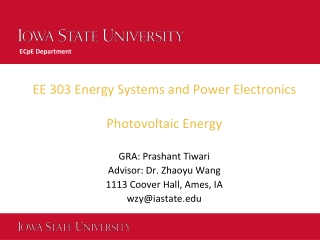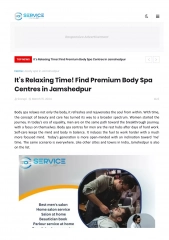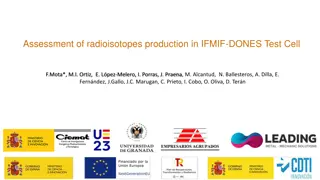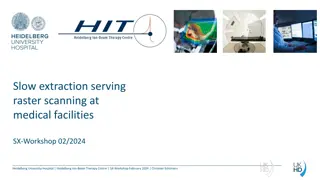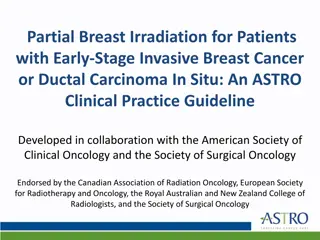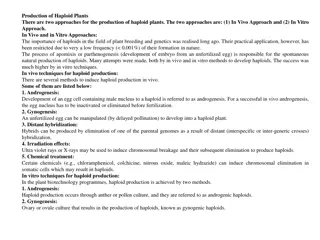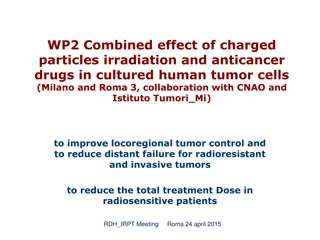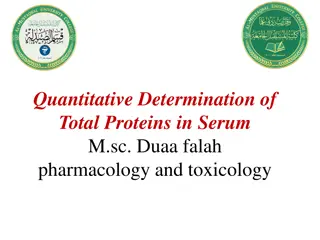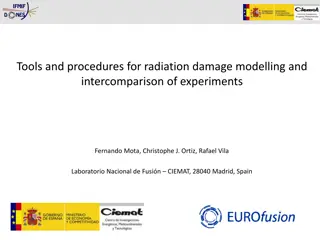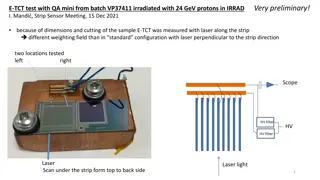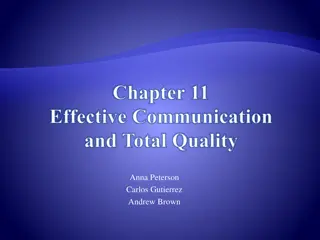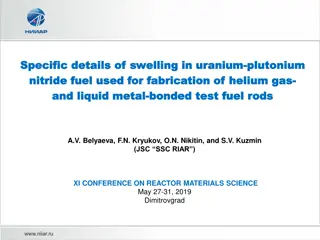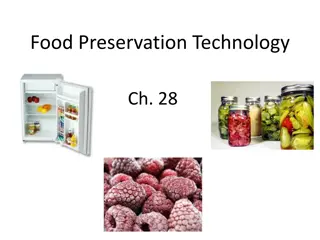Total Body Irradiation
Total Body Irradiation (TBI) plays a crucial role in bone marrow transplantation by eradicating diseased marrow and reducing tumor burden. It is essential for creating physical space for healthy donor marrow engraftment. The presentation discusses the goals, dose, fractionation, dose rate, techniques, and advancements in TBI, highlighting its significance in hematological treatments.
Download Presentation

Please find below an Image/Link to download the presentation.
The content on the website is provided AS IS for your information and personal use only. It may not be sold, licensed, or shared on other websites without obtaining consent from the author.If you encounter any issues during the download, it is possible that the publisher has removed the file from their server.
You are allowed to download the files provided on this website for personal or commercial use, subject to the condition that they are used lawfully. All files are the property of their respective owners.
The content on the website is provided AS IS for your information and personal use only. It may not be sold, licensed, or shared on other websites without obtaining consent from the author.
E N D
Presentation Transcript
Total Body Irradiation R4 Current Opinion in Hematology 2008, 15:555 560 Bone Marrow Transplantation (2011) 46, 475 484 Best Practice & Research Clinical haematology (2007). 295 310
Total Body Irradiation The first examples of human surviving supralethal TBI in leukemia with BM infusion and grafting was in 1965 Cancer Res 1965; 25: 1525 1531.
Goals of TBI Eradicating diseased marrow Reducing tumor burden Immunosupressive TBI may be particularly important in the setting of matched-unrelated donor transplants, when adequate immunosuppression is essential Deplete the BM to allow physical space for engraftment of healthy donor marrow
Total Body Irradiation Dual opposing 60Co Advantages: highly homogenous radiation exposure which allows the patient some freedom of movement Disadvantages: cost, difficulties in organ shielding, and the problem of delivering higher dose rates Linear accelerators a higher dose rate as well as organ shielding can easily be administered. Major concerns: the dose rate, the fractioning and the total dose
Dose, fractionation and dose rate employed during TBI Myeloablative regimens Early-myeloablative TBI regimens used single, large fractions of 8 10 Gray (Gy) High risk of death from interstitial pneumonitis Fractionation and reduction od dose Dose rates <10 12 cGy/min are associated with reduced rates of pneumonitis, nausea and vomiting TBI in daily or twice-daily fractions appears to improve the therapeutic ratio, allowing higher radiation doses inconvenient
Dose rate Most of the clinically used TBI regimens the radiation is given at low dose rates (5 8 cGy/min) High dose rates (60 80 cGy/min) in canine models showed more GI and marrow toxicity with more intense immunosuppressive effect High dose rate increases the risk of interstitial pneumonitis and cataract If TBI was fractioned, the toxicity reduced. Lower dose rates permitted higher total doses
Fractionating Fractionating was applied to increase the irradiation dose The total dose of fractionated TBI needs to be increased to have a similar Immunosuppressive effect as single-dose TBI Risk for late organ toxicity decreased and long- term survival improved in animal model International Journal of Radiation Oncology, Biology, Physics 1988; 15: 647e653. In clinical trials, Fractionated TBI showed less veno-occlusive disease (VOD) of the liver, a trend for fewer relapses and improved survival. Journal of Clinical Oncology 2000 Bone Marrow Transplantation 1986; 1: 151-157
Dose, fractionation and dose rate in Myeloablative TBI In the latter half of 20thcentury, myeloablative regimens delivering 12 Gy, twice daily, over 3 days, in combination with chemotherapy were most commonly employed 15-16Gy showed no improvement of OS (may be due to increased mortality unrelated to relapse) Blood 1990; 76: 1867-1871 Blood 1991; 77: 1660-1665
Reduced-intensity conditioning regimens In the 1990s, feasibility of reduced-intensity conditioning (RIC) regimens consisting of lower-dose TBI and/or fludarabine Cytotoxic effect from such regimens is minimal tumor cell death is largely dependent on a graft vs tumor effect McSweeney et al. employing 2 Gy delivered as a single dose, with or without fludarabine, with cyclosporine and mycophenolate mofetil as GVHD prophylaxis in older patients Other group use 2 Gy, single-dose, low-dose rate (7 cGy/min) TBI in the setting of both related and unrelated donor transplantation Blood 2001; 97: 3390 3400 Blood 2004; 104: 961 968. Blood 2003; 102: 756 762 J Clin Oncol 2005; 23: 1993 2003.
Reduced-intensity conditioning regimens Kahl et al. found better relapse free survival in CLL, MM, non-Hodgkin s lymphoma patients Blood 2007; 110: 2744 2748. Graft rejection risk is higher in CML and MDS patients Biol Blood Marrow Transplant 2005; 11: 272 279. Marks et al. compared cohorts of patients receiving myeloablative therapy vs RIC in ALL and showed no difference in mortality. However relapse rate increased in RIC group
Morbidity associated with current regimens for TBI interstitial pneumonitis In ~50% if single, large fraction of 8-10 Gy, with 50% fatal 25% in fractioned and low-dose-rate TBI CMV infection may take a role
Acute toxicities associated with TBI Nausea and vomiting Preventable with modern anti-emetic agents Parotitis Occur after the first 1-2 fractions, subsided within 1 2 days Unique to TBI Dry mouth and mucositis 5 10 days after TBI
End-organ damage and late effects after TBI Cataract Gonadal failure Thyroid dysfunction Kidney dysfunction Decreased bone mineral density Xerostomia Short stature and endocrine dysfunction in child Increased risk for cardiometabolic traits, including central adiposity, hypertension, insulin resistance and full-blown metabolic syndrome Venoocclusive disease of the liver may occur in 10 70% of patients
Second malignant neoplasms Two large, recent, analyses demonstrated the risk of solid tumor after BMT to range from 3 to 7% at 15 years following transplant A recent multi-institutional analysis of 28 874 allogeneic transplant recipients allogeneic transplant recipients demonstrated a 3.3% incidence of development of a solid tumor 20 years This risk was increased for the 67% of patients who received irradiation compared with those who did not This excess risk was observed only in patients who received radiation 30 years old Curtis et al. 58 observed the risk of solid tumor to be 2.2% 10 years after BMT, and 6.7% 15 years Blood 2009; 113: 1175 1183. N Engl J Med. 1997; 336 (13): 897 904.
Second malignant neoplasms Radiotherapy was observed to increase the risk of second cancers, this risk is significantly higher in receiving >10 Gy than <10Gy Patients are also at risk for further hematological malignancies, including MDS and AML J Clin Oncol 2000; 18: 348 357.
Protection of normal tissue during TBI Physical blocks TLI for immunosuppression during BMT TLI may result in increased proportions of natural killer T cells Prevent GVHD by inhibit conventional T cell Lowsky et al. described 37 patients with lymphoid malignancies or acute leukemia treated with 800 cGy total TLI, over 10 fractions, 3% grade II GVHD with increased odds of early CMV viremia
Future directions: increased conformality and potential for dose escalation Potential use of helical tomotherapy Potential use of proton beam radiotherapy Potential use of radioimmunotherapy
ALL The most commonly used regimen for transplantation of patients with ALL is CY plus TBI Retrospective analysis from the IBMTR found that a conventional CY/TBI regimen was superior to a non- TBI-containing regimen of BU plus CY, with a 3-year survival of 55 versus 40% for BU/CY. With similar relapse risk J Clin Oncol 2000; 18: 340 347. A recent study of BU, Fludarabine and 400 cGy of TBI showed a low TRM(3%) and a projected DFS of 65%
ALL A comparative analysis of TBI combined with either CY or etoposide chemotherapy showed no TRM differences In CR1, no significant differences in relapse, leukemia-free survival or survival by conditioning regimen In CR2, the risks of relapse, treatment failure and mortality tended to be lower with etoposide (regardless of TBI dose) or with TBI doses 413 Gy. Biol Blood Marrow Transplant 2006; 12: 438 453.
AML Cy-TBI appears to be superior to Bu-Cy in terms of survival and LFS, especially in patients with advanced disease Both TRM and relapse are reduced in patients undergoing TBI Early toxicity is an important problem with Bu, and higher incidences of VOD and hemorrhagic cystitis are reported IBMTR Experimental Hematology 31 (2003) 1182 1186
BUCY and CyTBI Best Practice & Research Clinical Haematology Vol. 20, No. 2, pp. 295 e 310, 2007
Best Practice & Research Clinical Haematology Vol. 20, No. 2, pp. 295 e 310, 2007


